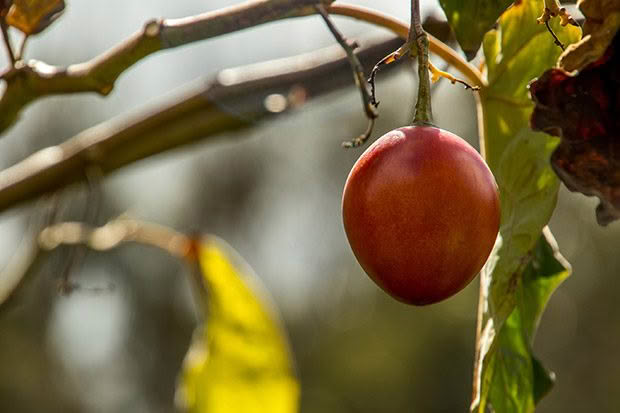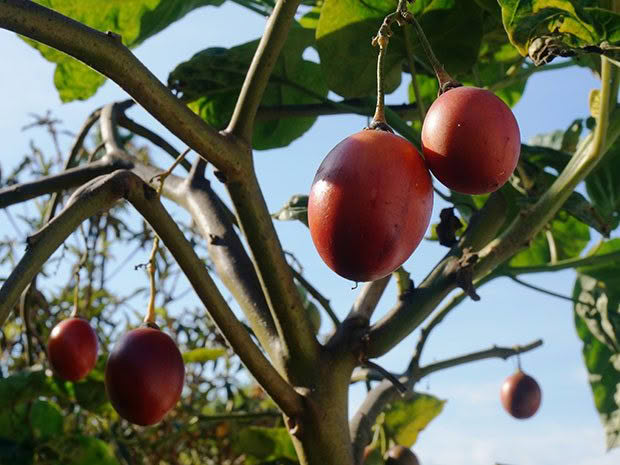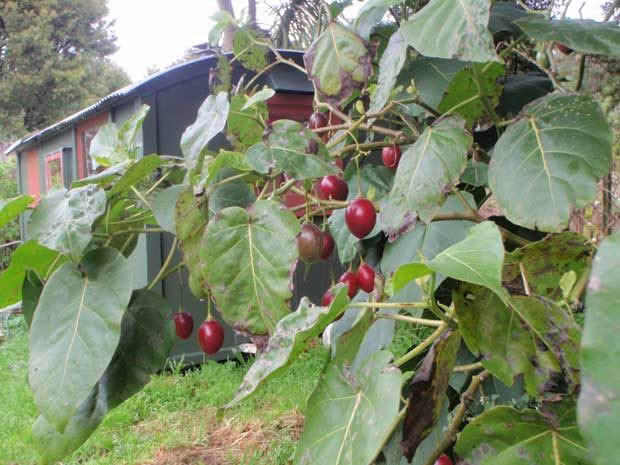Tips for getting 20kg of tamarillos per tree

They’re fussy, but tamarillos are a tangy treat, and prolific if you know the secrets to high production.
Words: Ben Gaia
Tamarillos are fussy. The natives of the cool, upland, tropical areas of the Andes don’t like to be too cold or too hot. In chilly NZ, they are limited by winter frosts below -2°C so they are mostly grown in coastal areas. NZ exports around 2000 tonnes per year, and is where the name ‘tamarillo’ was invented to make them sound more exotic than a tree tomato.
Fruit can be red or yellow; personally I prefer the more tangy red ones. The plants grow from seed to about 2m tall, long and leggy, and only fruit after they have formed 21 branches, usually after Year 2.
7 TIPS FOR GETTING THE BEST CROP

1. They only live for a decade, so always have a few young ones coming on to replace the old ones;
2. Tip cuttings will fruit sooner, and tend to produce a stronger, more compact bush;
3. Old wise growers will tell you to grow your tamarillo plants under the house eaves facing north. In coastal and windy areas it pays to shelter the trees, and cover them during a frost;
4. Don’t put them in your greenhouse; they grow better outside away from whitefly which covers them like snow otherwise;
5. Feed them like a tomato, with plenty of nitrogen and trace elements;
6. Pruning increases fruit size, so in summer trim some of those leggy growing branch ends back by 60cm.
7. Combine it all and you can harvest up to 20kg per plant – we have had a banana box full off one tree.
TWO DEADLY ENEMIES OF YOUR TAMARILLO

Tamarillo trees only fruit after they have formed 21 branches.
Just like citrus trees, tamarillos will die if left to dry out, even if for only a day. In eastern areas you will have to irrigate all summer with a drip line or hand water every few days. In the west, if you’re growing outside, your older plants will get through a few days of dry summer winds but not many. Get the watering can out or you’ll lose your prized tree. Mulch the root zone to keep the moisture in.
Snails are a tamarillo’s worst enemy and will spend all night eating the tiny forming fruits -– snails can eat a whole tree from the top down in a week. Use birds for snail patrol and encourage thrushes and blackbirds into your garden, and/or remove buggy-looking leaves and control snails by night with a torch. Attack snails and slugs in general with ducks and blackbirds, chooks, and even wekas if you are in the right area.
BEN’S TIPS ON EATING TAMARILLO
Tamarillo taste best cooked – if you add sugar or honey, they are perfect – but they are also a delicious raw addition on top of a pavlova. In Ecuador they are made into a hot chilli sauce called aji; in Northern India they are pickled.
My favourite preparation is a hot traditional fruit crumble, half tamarillos, half plums or apples, eaten with custard and ice cream. There are great recipes on this website, and you can also buy and download Jan Bilton’s specialist Tamarillo cookbook.
About the author
Ben Gaia grows trees in the extreme climate of the West Coast of the South Island and runs a mail order nursery for organic fruit and forestry trees, www.dialatree.co.nz
READ MORE

